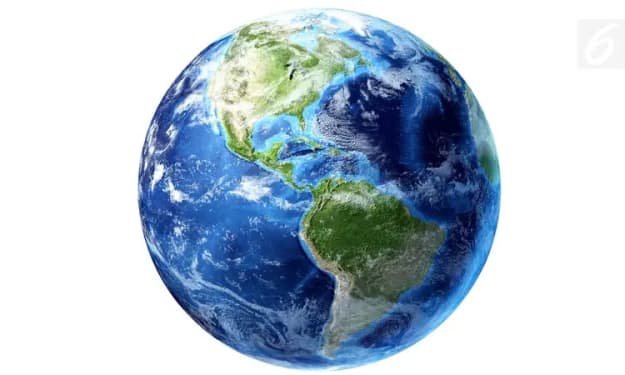The coal seam is more than 100 meters thick, how exactly did it form?
Were there really so many plants on the ancient earth?

The leap in human development began with the industrial revolution, and one of the resources essential to promote the rapid development of the industrial revolution is fuel.
Oil, natural gas, and coal are the three major fuels used on Earth today. Compared to the first two, coal has not only been used for the longest time, but its resources are also quite abundant, and even in some places, the coal seams can be more than 100 meters thick.
How is such a thick layer of coal formed?
The formation of coal
For a long time, coal has been called "black gold" or "industrial food", playing a huge role in promoting social development. In addition, it has a high content and is widely distributed. The reason for this characteristic is that coal is formed in many ways.
Generally speaking, coal is divided into rotten coal, residual coal, and rotten mud coal according to their causes. The rotten coal refers to the coal transformed from the remains of higher plants after death by beatification and coalification; the residual coal is the coal transformed from the enrichment of various parts of higher plants, and the rotten coal is formed by algae and plankton after decomposition.
Among these three causes, the main one is saprophytic coal.
The process of coal formation is a long and demanding period, and most of the coal we use today is hundreds of millions of years old.
When the leaves and branches of plants are driven off to the ground, they will gradually accumulate a layer of black rotting matter. This humhummus is usually caused by the gradual isolation of the plant residue from oxygen, making anaerobic bacteria and fungi the main factors involved in the various reactions of the residue, which in turn leads to the production of humus.
When such humic substances are produced, they are further isolated from oxygen by being buried in the interior of the crust due to crustal movement. The proximity of the crustal interior to the soft fluid layer and the mantle leads to further physical and chemical reactions in a high temperature and pressure environment, which eventually becomes a black sedimentary rock.
In general, the number of plant remains and the frequency of crustal movement areisst closely related to the depth of coal seams in a region. However, the prerequisite for this must be the plants that provide the raw material.
What is more, the demand for raw materials is greater for high-quality coal. Scientists calculate that the initial formation of coal is generally lignite, and lignite if you want to become a high-quality coal addition to the need for a longer period of compaction, in this long compaction, the loss of lignite is very large, a meter thick bituminous coal requires 20 meters of humus like lignite to do.
This shows that the formation of coal on earth, the most inseparable is the plant. With such a rich coal content, more plants are needed, but were there read many plants on the earth in the end times?
Carboniferous: a period of high biological prosperity on Earth
The client Earth did provide rich conditions for the birth of coal, especially during the Carboniferous period, which accounted for more than half of the world's coal reserves, and that is why the name Carboniferous was given to it after the division of geological time.
The Carboniferous period was between 286 million and 360 million years ago, a period in which all organisms were in a period of extreme prosperity. The reason for this is that the climate during this period was very friendly to the Earth's creatures, warm and humid.
In addition to the rapid growth of ferns, gymnosperms also flourished during this period, and the emergence of gymnosperms provided the first materials for the formation of coal.
At that time, the earth was in a period of relative stability and high oxygen content, which led to the rapid development of earth life. The carbon dioxide produced in the air and bet respiration of other organisms allowed trees and shrubs to have a better environment for growth.
Trees of this period could reach a stem diameter of 20 cm to 40 cm, and they were tall and sturdy an,d widely distributed in all regions.
The warm and humid environment provided the environment for the growth of trees, while the active crustal movement and the widespread swamps provided the conditions for the formation of coal.
According to the above-mentioned causes of coal formation, the most important thing is to get rid of oxygen first. Since many nudibranchs grow near swamps, when they die or their leaves fall to the ground, the dense piles first exclude some of the oxygen, and the methane gas quickly fills the piles, allowing them to quote humus.
Coupled with the high crustal activity during this period, this humus was easily buried underground, allowing further coal formation.
During this 100 milmillion-yearriod of the Carboniferous Period, coal was not only able to form in large quantities, but it also brought the Carboniferous Period to a close in person.
Due to the massive growth of plants, the Earth's oxygen content became higher and higher, and by the end of the Carboniferous period coal seams up to 30 meters thick had formed on the surface. Under the active movement of the earth's crust, the high temperature generated by magma crossed the rocks and led directly to the burning of coal seams. The fire lasted for more than thirty years in an extremely oxygenated environment, dealing a fatal blow to the life of the planet, which did not flourish again until tens of thousands of years later.
In fact, in addition to the Carboniferous period, coal was formed in the Permian, Jurassic, Cretaceous, and Tertiary periods of the Cenozoic. The Carboniferous period, however, was more favfavorabler coal.
The suitable environment allowed the growth of trees in large numbers, the great prosperity of trees provided raw materials for coal, the distribution of swamps accelerated the formation of humic substances, and the active crustal movement allowed coal to be formed in a short perperiodhe intertwining of these three conditions oveoverre than 100 million years makes it impossible to compare the formation of coal with the Carboniferous period even after such a long period on Earth.
Although the years of coal formation are not worth mentioning compared to the age of the Earth according to geological age, for us humans, the formation of coal was quite long even in the Carboniferous period, not to mention that the Earth does not use much coal today, especially when oil resources are facing depletion.
But coal, as a non-renewable resource, will also run out one day. Therefore, when human beings use the earth's resources, they should also plan for future development, only sustainable development, so that the earth and human beings can have a longer life.
About the Creator
Karen Gillanah
The aggravation that can be told is not aggravation; the lover that can be snatched away is not a lover.






Comments
There are no comments for this story
Be the first to respond and start the conversation.